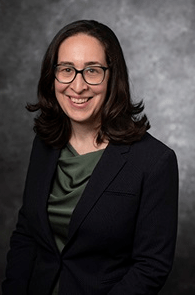Study sheds light on how the way our ancestors fed themselves changed our ecosystem
DALLAS (SMU) – Humans started making an impact on the global ecosystem through intensive farming much earlier than previously estimated, according to a new study published in the journal Science.
Evidence of the earliest domesticated plants and animals dates back to around 10,000 years ago. But findings from a team of more than 250 scientists, including two from SMU (Southern Methodist University), show that by 3,000 years ago our ancestors had dramatically changed the world to grow food. 
“Our study shows in detail the progression from the origins of agriculture to its spread around the world,” said SMU anthropologist Mark D. McCoy. “It turns out that earth science models are probably too conservative, and intensive reshaping of the environment for food production was common by thousands of years before the onset of the kind of industrial scale farming we see today.
“That is important because over the time periods discussed, humans became the major force shaping ecosystems around the world,” McCoy said.
The new global assessment by the ArchaeoGLOBE Project also shows that scientists have previously underestimated the impact of early human land use.
Crowdsourcing the Map
Led by archeologist Lucas Stephens, a researcher affiliated with the Max Planck Institute for the Science of Human History, ArchaeoGLOBE used a crowdsourcing approach, inviting experts in ancient land use to contribute to a questionnaire on 146 regions (covering all continents except Antarctica) at ten historical time intervals to assess and integrate archaeological knowledge at a global scale. The result was a complete, though uneven, meta-analysis of global land use over time.
Significantly, the study also reveals that hunting and gathering was more varied and complex than originally thought, helping archeologists to recognize that foragers “may have initiated dramatic and sometimes irreversible environmental change.” Intensive forms of agriculture reported around the world included activities like clearing land, creating fields that were fixed on the landscape, raising large herds of animals, and putting increasing amounts of effort into growing food.
SMU anthropologist and ArchaeoGLOBE team member K. Ann Horsburgh notes the rise in agriculture and livestock is primarily due to growing populations needing to be fed.
“Food production such as agriculture and pastoralism, when compared with foraging in the same environment, is linked to a faster population growth and can sustain higher population densities,” said Horsburgh.
Horsburgh, Assistant Professor of Anthropology, and McCoy, Associate Professor of Anthropology, provided information on land use in Africa and the remote islands of the Pacific, respectively. McCoy also brought his expertise in geospatial technology to study how people in the past inhabited and shaped the world around them, while Horsburgh brought her knowledge of ancient DNA to retrace the spread of domesticated animals.
Mapping Ancient Migrations
The map could provide new light on how the spread of farming and herding were linked to major migrations in human prehistory.
“This is first time that regional expertise on ancient land use has been synthesized on this scale,” Horsburgh said. “That matters because we know that although the shift from foraging to farming tends to be a ‘one-way’ transition, it did not progress the same way around the world. The details of how it did progress has shaped everything from our diets to the languages we speak today.”
Horsburgh went on to say, “What remains the topic of intense study is how much of the transition is food producers spreading and displacing foragers, and how much is it foragers adopting or marrying into food producing groups, or some other scenario. Most of this was done in the absence of written records, so it is up to anthropology to sort things out.”
“The natural next step for this revised model of the spread of different types, and intensities, of land use is to compare them with human genetics and linguistics and integrate these findings into the big story of humanity,” said Horsburgh.
Several media outlet covered this research including The New York Times, Science and CNN.
About SMU
SMU is the nationally ranked global research university in the dynamic city of Dallas. SMU’s alumni, faculty and nearly 12,000 students in seven degree-granting schools demonstrate an entrepreneurial spirit as they lead change in their professions, communities and the world.



